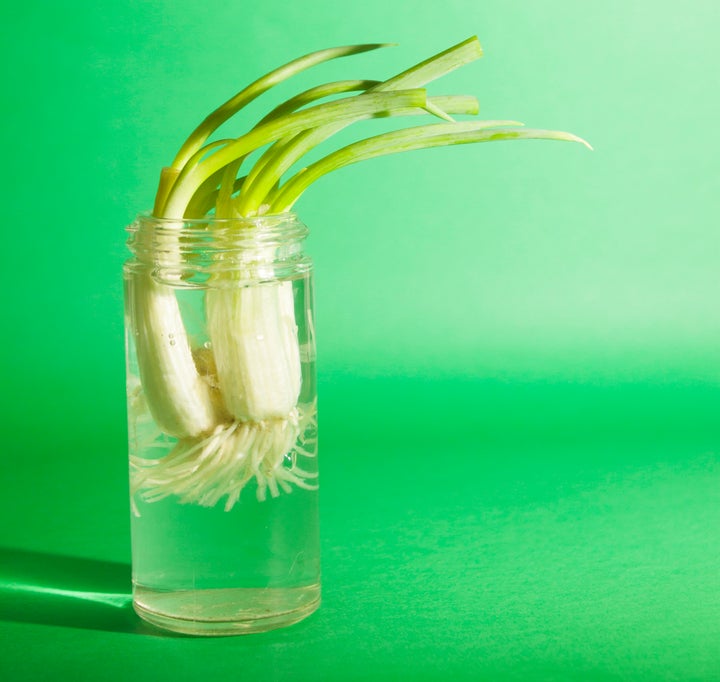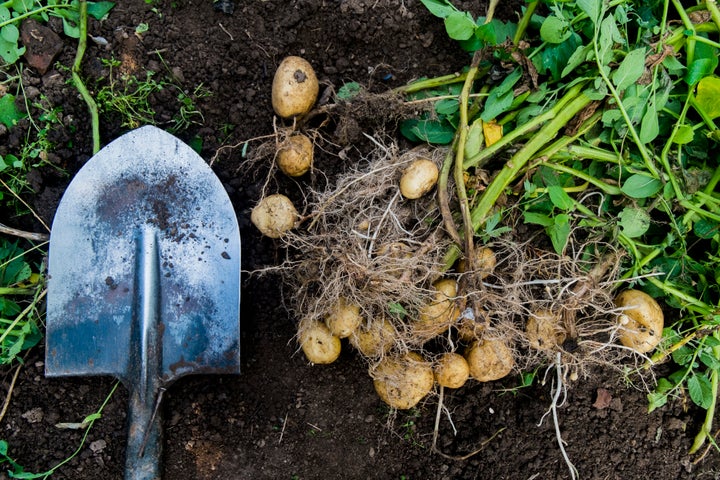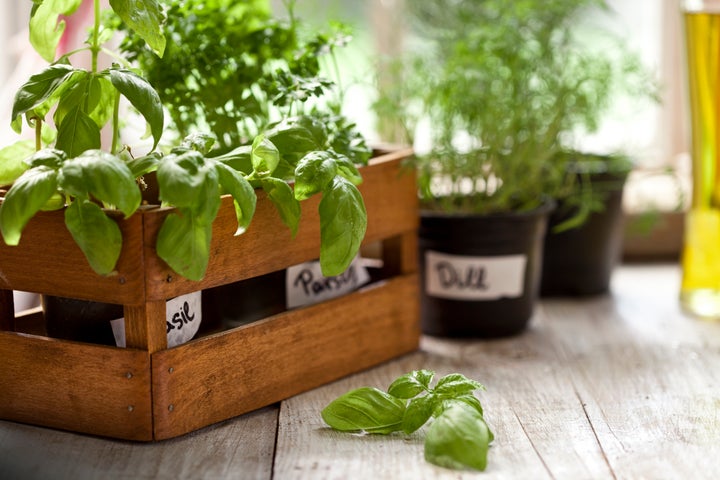Did you know that the food scraps we chuck in the bin could be brought back to life by simply placing them in a glass of water? Or that those half mouldy potatoes lurking at the back of the cupboard could be planted in your garden and give you a crop of your own homegrown spuds?
In the UK we have an abundant food supply, but households waste several million tonnes from cupboards and fridges, according to resource consultancy WRAP. We’ve rounded up the five easiest foods to regrow at home, which will save on food waste and give your wallet a well-deserved break.
Spring Onions
The inedible ends of spring onions that usually go straight in the bin can be given a new life. According to The Gardening Cook, they can be regrown within 10 days. The key is to save the ends that have roots attached – the longer the roots, the better the success rate.

Once you’ve saved the ends, place them in a glass or small vase with water filled to just beyond where the green of the plant begins. Place them on a sunny windowsill, and within a few days you’ll see shoots appear. Once they’re at full size you can eat them – but remember to keep the roots so you can regrow them again!
Potatoes
If you have a garden or access to a balcony – and have space for a large plant pot – you can turn your long-forgotten potatoes into a brand-new crop in a matter of months. The best potatoes to plant are the ones that have started to grow their own gnarly sprouts.
They might look unpalatable, but instead of putting them in the food waste bin, plant them directly into the soil in a sunny spot. Leave several inches between each potato, and push them three inches below the surface.

With a bit of luck (and some water), you’ll start to see the potatoes sprout green leaves and flowers within a few weeks – at which point keep them well watered. After three weeks, new potatoes will begin to form in the soil. They should be ready to dig up within 18-20 weeks, according to Better Homes And Gardens.
Romaine Lettuce
That bitter, rooty bit of lettuce left over after you’ve gobbled up the leaves can be dunked straight into a glass of water and left to regrow. The lettuce will likely grow smaller than the original, but it should be just as tasty. Place the end of the lettuce in about an inch of water, then keep topping up the water as it absorbs. According to Lifehacker, some of the original lettuce might go a bit brown, so simply discard those bits before you eat it.
Basil
Basil plants are affordable to buy (for around £1 from a supermarket), and can be kept alive for months with plenty of sunshine and water – but you can also make them multiply for an endless supply.

Chop off a couple of strong healthy stems from your plant, ideally several inches in length, and remove the smaller lower leaves so that the largest at the top remain. Place the stems in a clean glass of water, about half full. Change the water regularly to keep it clean, and wait about two to three weeks for the basil stems to sprout roots.
Once the roots have sprouted, place them in a new pot of soil and voila: a new healthy basil plant.
Celery
You might need a bit more patience with this homegrown crop, as celery takes around five months to grow fully. Chop off the celery stalks as your normally would but keep the end. Give it a rinse and place it in a shallow saucer of lukewarm water, positioning it in a sunny spot on a windowsill with what’s left of the stalks facing upwards.

After one week, tiny green leaves will start sprouting up from the base. At that point, transfer your stalk into a small pot filled with soil – or you can even reuse a can for maximum recycling props by drilling a series of small holes in the bottom for drainage (read more about that here).
Cover the stalk entirely with soil, exposing only the new green leaves. Water it generously and leave it in a sunny spot. Within four weeks, you’ll see tiny celery stalks start to push out of the soil and grow upwards. And within five months, they’ll be large enough for you to chop off and eat.
